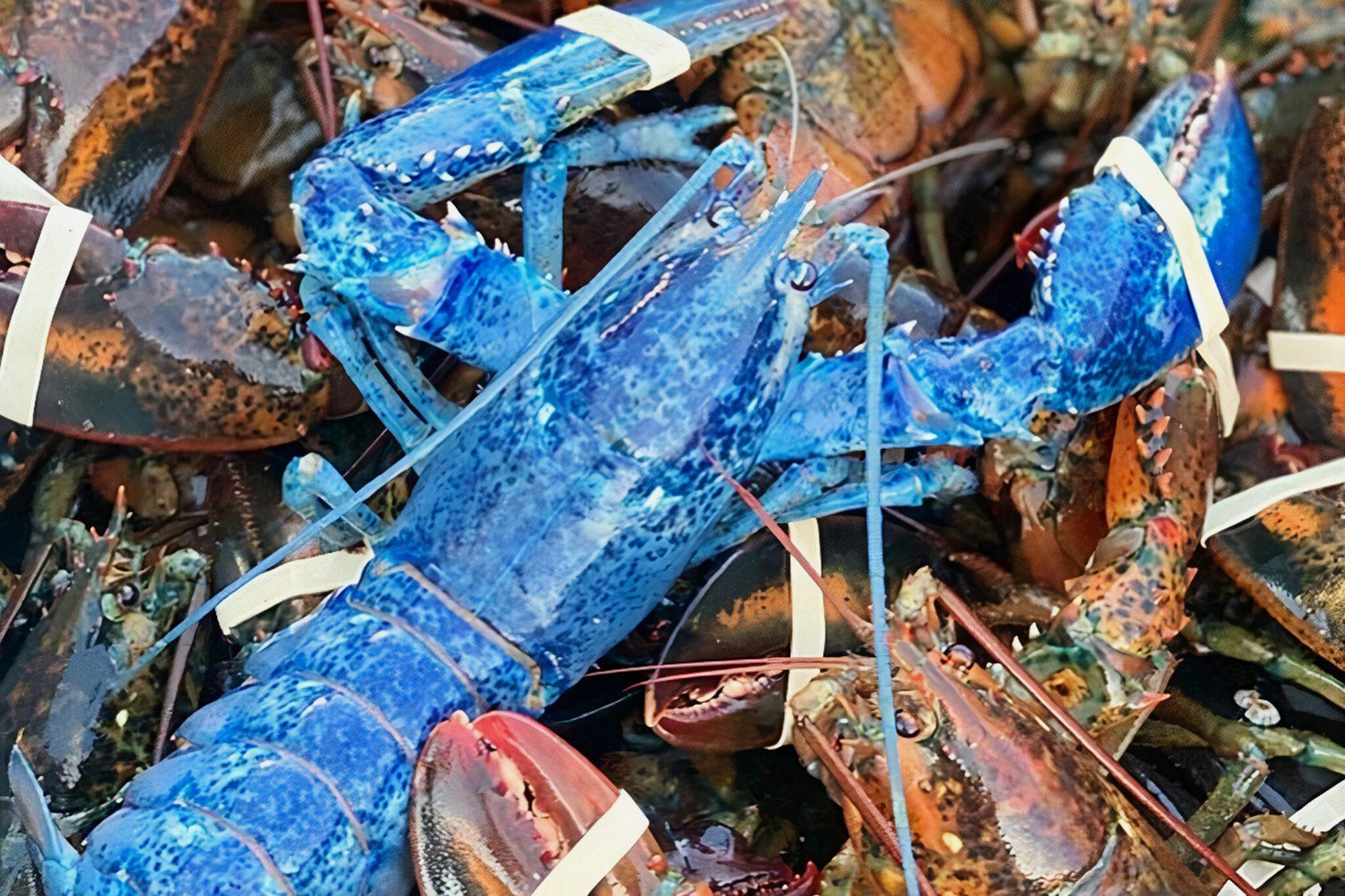
Fishermen keep finding weirdly-coloured lobsters off the coast of Canada
To camouflage with the ocean floor, the average lobster in the wild is usually a murky brown colour (until it is boiled alive and becomes a pinky-red, that is) — but fishermen off the east coast of Canada have been finding a few remarkable clawed friends who don't really blend in with the rest of the bunch.
At least three electric blue lobsters have been caught in the waters near Nova Scotia, P.E.I. and Quebec in recent days, with the anomalous little guys purported to represent about one in every two million of their species, though the exact chances of coming across one are hard to pinpoint due to how rare they are.
The unnatural looking hue of the crustaceans is the result of a genetic abnormality that leads to the overproduction of a certain protein. Most lobsters do have some blue-green undertones mixed into their muddled brown colouring, but for the shocking ultramarine toned lobster, the other pigments appear to be lacking.
There are other shades of lobster that are even rarer, like the orange, yellow or calico lobster, the odds of which are about one in 30 million.
There is also the split lobster — one in 50 million — another bizarre catch that someone in Eddies Cove, Newfoundland made in May.
Or even more unlikely is the albino lobster, which is estimated to be a one in 100 million find — a discovery that one Nova Scotia lobster fisherman made late last month. This type is the only one that won't turn red when boiled, and thankfully it is such a significant catch that no one would dare waste its life for a meal.
Blue, orange and other bizarre-looking lobsters have been spotted off the coast of Canada and the U.S a number of times this season and over the past few years, and are usually either set free or sent off to aquariums.
Scientists aren't sure what has made them seemingly more prevalent lately, aside from perhaps sheer luck. And, according to legend among some Maritime fishermen, they can bring even more good fortune — something we could all use a little more of this year.
Latest Videos
Join the conversation Load comments







